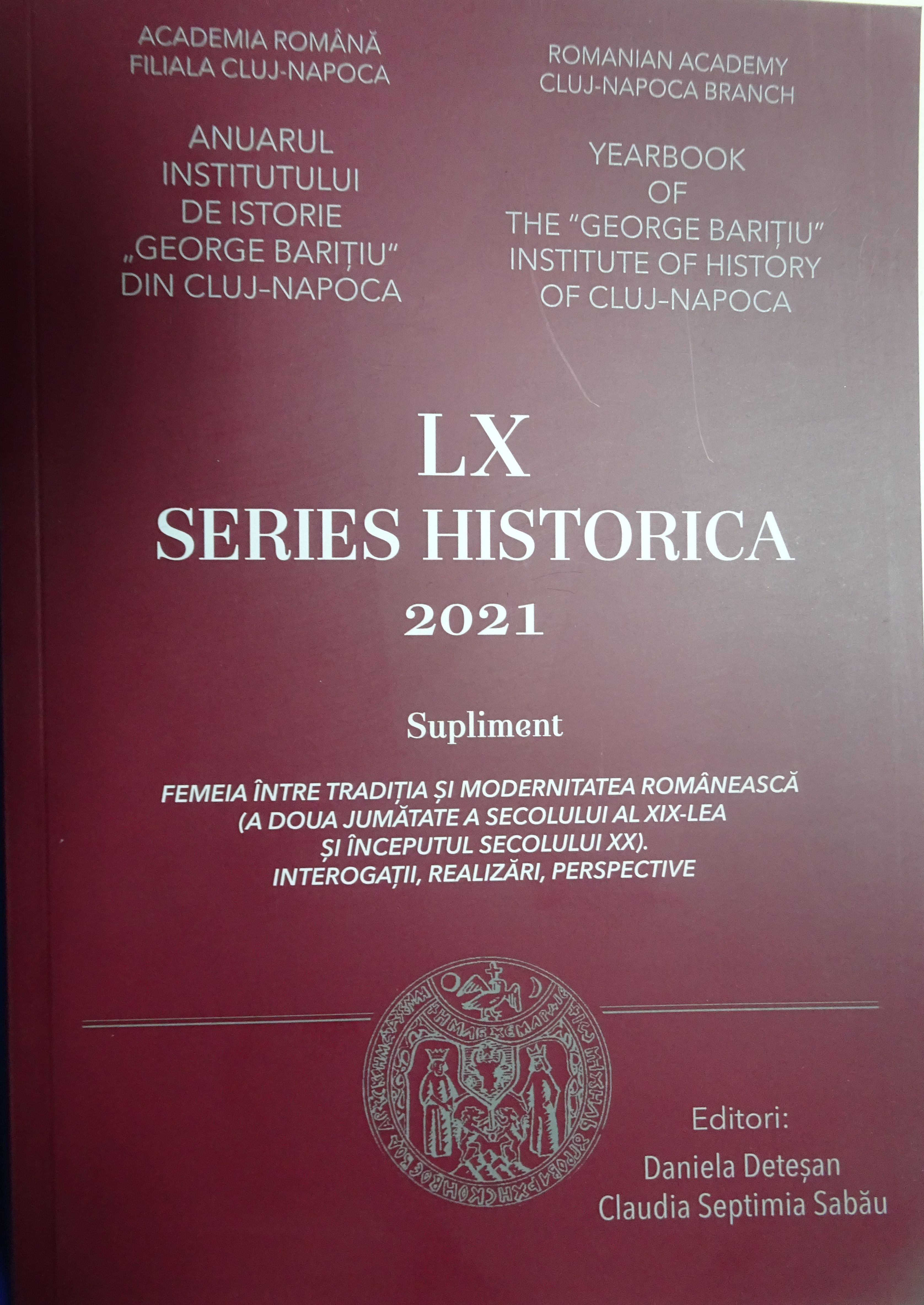Destinele a două reprezentante ale dinastiei Mureșenilor-Surorile Elena Cornelia (1854-1925) și Sevastia Lucreția (1860-1928)
The Destinies of Two Representatives of the Mureșianu's Synasty - Sisters Elena Cornelia (1854-1925) and Sevastia Lucreția (1860-1928)
Author(s): Marinela Loredana BarnaSubject(s): Local History / Microhistory, Social history, Gender history, 19th Century, Pre-WW I & WW I (1900 -1919), Interwar Period (1920 - 1939)
Published by: Editura Academiei Române
Keywords: Mureșianu dynasty; Elena Cornelia Mureșianu; Sevastia Lucreția Mureșianu; Transylvania, Romania; 19th century; 20th century;
Summary/Abstract: The Mureșianu dynasty let its mark on the history of Transylvania, especially through its representative members – Iacob Mureșianu and his sons, phd. Aurel Mureșianu and Iacob Petru Mureșianu. Iacob Mureșianu constantly instilled in his children a sense of duty to their peers and his wife, Sevastia, considered educating children as a serious task on which the future of the family depended, a task she successfully performed. These lessons were harmoniously intertwined in the destinies of Iacob Mureșianu's two daughters, Elena Cornelia (1854-1925) and Sevastia Lucreția (1860-1928), who through their actions became an example in shaping the status of Romanian women in Transylvania in the 19th century. Through marriage, they both end up in the Kingdom of Romania where they will follow their husbands. Elena Cornelia married Moise Groza who later became a general in the Romanian army and Sevastia Lucreția married Constantin I. Davidescu, engineer. The correspondence between the family members kept in the Mureșenilor Archive provided the information that was the basis for the reconstruction of the destinies of these two.
Journal: Anuarul Institutului de Istorie »George Bariţiu« - Series HISTORICA - Supliment
- Issue Year: LX/2021
- Issue No: 1
- Page Range: 269-282
- Page Count: 14
- Language: Romanian

